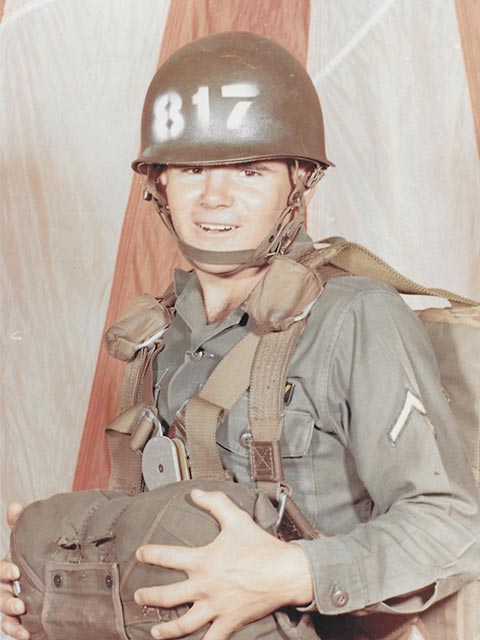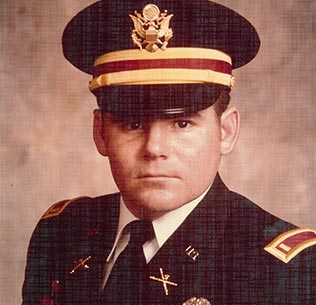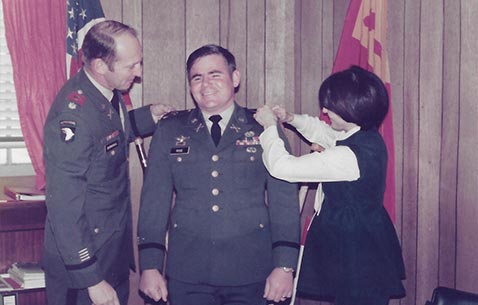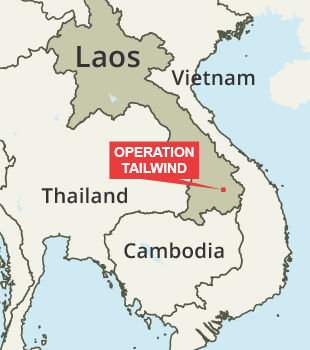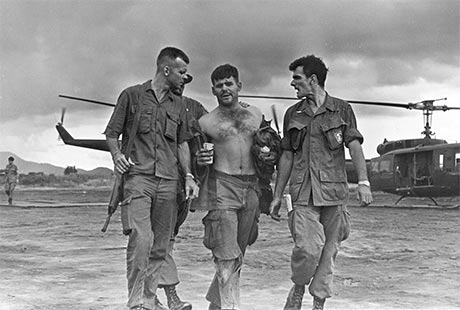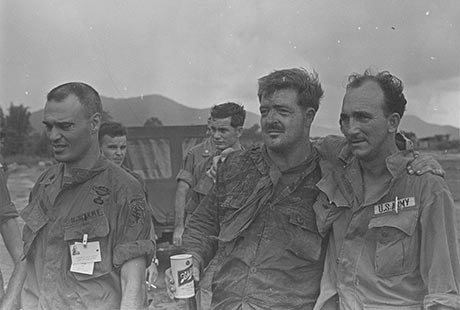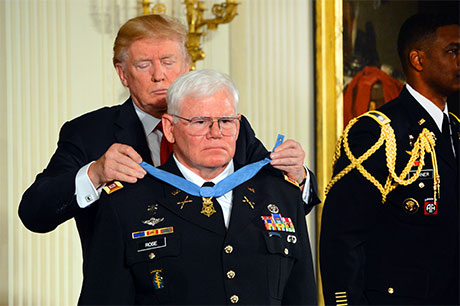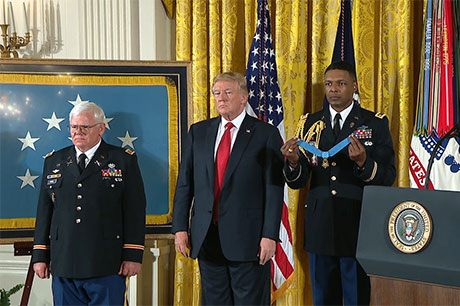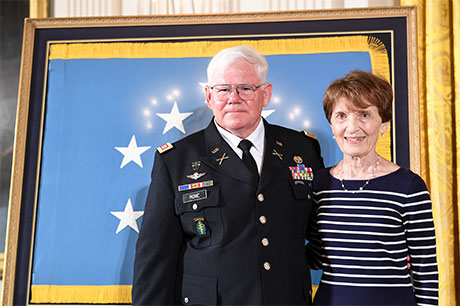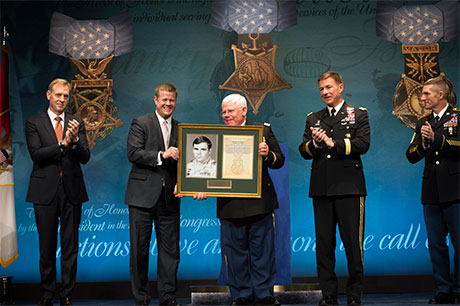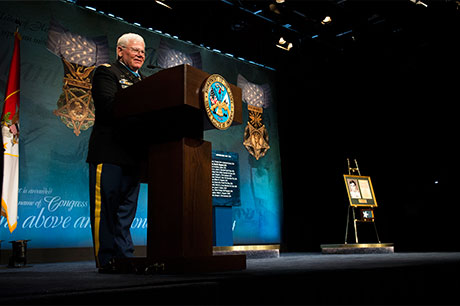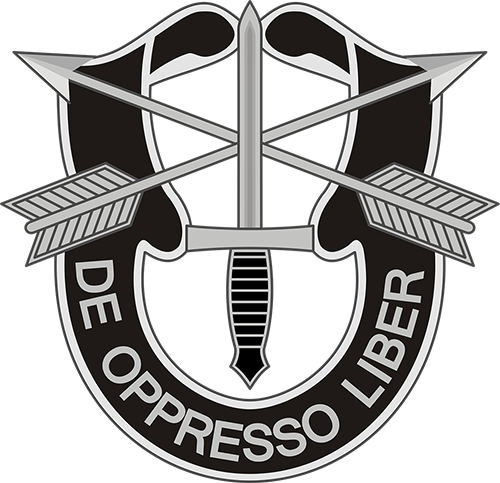Map depicting the Operation Tailwind insertion point near Chavane, Laos, Sept. 11, 1970
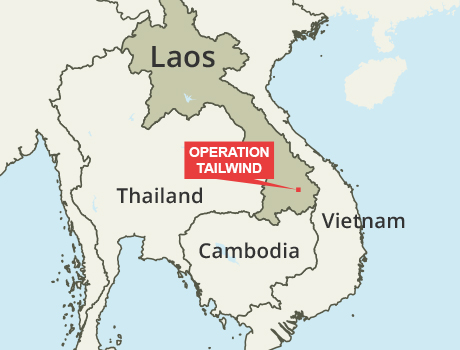
Map depicting the Operation Tailwind insertion point near Chavane, Laos, Sept. 11, 1970
Sgt. Rose was serving as a Special Forces medic with a company-sized exploitation force consisting of Americans, Vietnamese and indigenous paramilitary Montagnard personnel that was inserted 70 kilometers inside enemy-controlled territory on Sept. 11, 1970.
Once on the ground, they moved deep into enemy territory. The company soon made contact with an enemy squad, wounding two Americans and two Montagnards. One of the wounded was trapped outside the company defensive perimeter. Rose, engaging the enemy, rushed to get the wounded Soldier. Rose rendered expert medical treatment and stabilized the wounded Soldier, and carried the man through the heavy gunfire back to the company defensive area.
When the enemy withdrew, the company continued deeper into enemy territory. The company engaged more enemy forces, and took more casualties. Bravely and courageously, with no regard to his own safety, Rose moved through the enemy fire to render lifesaving medical treatment to the mounting numbers of wounded, personally engaging the enemy in order to get to the wounded men.
The fire becoming so intense, Rose had to crawl from position to position to treat the wounded. As he moved, Rose gave words of encouragement and directed the fires of the inexperienced and terrified Vietnamese and Montagnard troops. Over the next few days, the unit marched west and deeper into the Laos jungle, defending against continuous attacks from squad to company-sized enemy elements. Air Force gunships overhead provided close-air support to keep the enemy at bay.
Wounded in Action
Rose received the most severe of many wounds on the second day of the mission. Rose’s wounds did not slow his eagerness or determination to save the wounded Soldiers.
During an assault by a company-sized element of North Vietnamese Army, one of the Montagnards was wounded 40 to 50 meters outside the company area. Rose ran, crawled, and maneuvered his way to this wounded man, shielding the Soldier with his own body, as he rendered lifesaving medical treatment. Rose then dragged the wounded Soldier back to the company with one hand while holding back and engaging the enemy with his weapon in the other hand.
“I got a hole blown through my foot about the size of my thumb.”
Retired Capt. Gary M. Rose
Rose was returning to the company area with the wounded Soldier when a rocket propelled grenade landed nearby, spraying Rose with shrapnel in his back, leg, and severely crippling his foot. Using a stick as a crutch, as he would for the remainder of the mission, Rose continued professionally treating the wounded while ignoring his own painful wounds.
Need for Medevac
The company had taken so many wounded that a medevac helicopter was called. The helicopter was unable to land in the small opening where the company sought cover, and Rose, standing and fully exposed to the withering enemy fire, attempted to pass the wounded up to the crew on the hovering helicopter. So intense was the enemy fire, the medevac pilot aborted the mission, and the severely damaged helicopter crashed a few miles away.
Using close air support, the company was able to break out of their defensive position. Rose improvised litters for the wounded, which now numbered over half the company. Despite his own painful and debilitating wounds, Rose never took time to eat, rest, or care for his own wounds while treating his fellow Soldiers.
On the last night of the mission, the company was surrounded in their position. Rose worked tirelessly to dig trenches for the wounded and treat their injuries. The NVA bombarded the company all night with rockets, grenades and mortars. All night, Rose exposed himself to the enemy fire, courageously moving from position to position, encouraging the Soldiers and treating the numerous wounded.
On the last day of the mission, after destroying an enemy base camp, the company was notified by the forward air controller that over 500 NVA were moving on their position. The company was ordered to a helicopter extraction point as Air Force assets cleared their path, guiding the company to the next landing zone. Setting a perimeter around the LZ while each platoon was loaded up, the enemy assaulted them from 360 degrees.
"Your job [as a combat medic] is to maintain the person’s life, to keep them out of shock ... You’ve got to talk to the person. You’ve got to convince them that they’re going to be fine ... even in the chaos of battle."
Retired Capt. Gary M. Rose
Time to Evacuate
The NVA, close on the heels of the company at the landing zone, caused even more casualties among the allied personnel. Rose moved under intense enemy fire of the assaulting NVA, completely exposing himself, to retrieve the allied dead and wounded and return them to the company defensive perimeter. In great pain, Rose continued to retrieve and medically treat Soldier after Soldier, under the withering enemy fire with no regard to his own safety.
With the arrival of the extraction helicopters, Rose returned to the outer defensive perimeter to engage the enemy and repel the continued and determined enemy assault.
Rose boarded the final extraction helicopter while delivering accurate aimed fire on the enemy as he hobbled up to the loading ramp. Numerous NVA soldiers were now overrunning the vacated landing zone, an estimated 50 meters from the aircraft
Shortly after the helicopter lifted off, it was hit by enemy anti-aircraft rounds. At about 4,500 feet in the air, Rose heard the engine stop. Rose was alerted that a Marine door gunner on the extraction helicopter had been shot with an enemy round through his neck. Rose rushed to his aid, rendering lifesaving medical treatment that saved the Marine’s life before the helicopter crashed, several kilometers away from the initial extraction point.
Rose was thrown from the helicopter before the point of impact.
With the Soldiers on board wounded from the crash, the helicopter was smoking and leaking fuel. Still dazed and wounded from the crash, Rose crawled back into the downed helicopter to pull his wounded and unconscious teammates from the wreckage, knowing it could explode at any moment. Rose continued to professionally administer medical treatment to the injured personnel until another helicopter arrived on the scene to extract the men.
On return to base, Rose, covered in blood and wounds, refused all treatment until the other wounded men were attended to first.
Despite the many wounded, only three men died during the four days of almost constant contact with a superior enemy force deep in enemy territory. Rose is credited with treating 60-70 wounded personnel and saving many lives. Rose’s unwavering devotion to duty, professionalism and skill in his job as a medic, and extreme courage under heavy enemy fire, reflect great credit on himself, the Special Forces, and the United States Army.
"I remember sitting on the tailgate and all of a sudden the helicopter went quiet ... We're going to crash"
Retired Capt. Gary M. Rose
U.S. Army Sgt. Gary M. Rose is helped from a helicopter landing area after Operation Tailwind, 1970. Photo courtesy of Ted Wicorek.
Capt. Eugene C. McCarley (center), commander of B-company, and other members of Sgt. Gary M. Rose’s unit after Operation Tailwind, Sept. 14, 1970. Photo courtesy of Gary M. Rose.
Moving the wounded and unconscious men a safe distance away from the smoldering wreckage, Rose continued to professionally administer medical treatment to the injured personnel.
Another helicopter arrived on scene to extract the personnel. On return to base, Rose, covered in blood and wounds, refused all treatment until the other wounded men were attended to first.
Despite the many wounded, only three men died during the four days of almost constant contact with a superior enemy force deep in enemy territory. Rose’s unwavering devotion to duty, professionalism and skill in his job as a medic, and extreme courage under heavy enemy fire, reflect great credit on himself, the Special Forces, and the United States Army.



